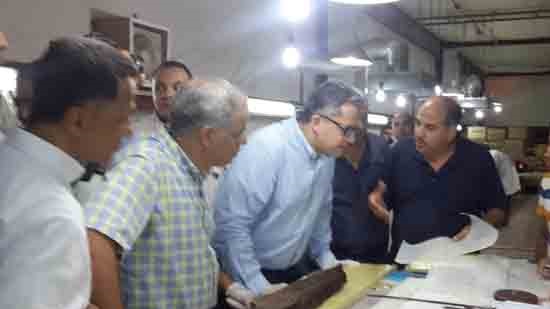The Ministry of Antiquities has announced that the Kom Al-Shoqafa catacombs in Alexandria are safe and have not been submerged in water, as published in some news reports and on social media.
In the statement, head of the Central Administration for Maintenance and Restoration Gharib Sonbol described the social media accounts as “lies and unfounded claims.”
Sonbol said that the catacombs are unharmed, and that water machines installed in the surrounding area are working efficiently and reduce the subterranean water level to protect the site from flooding.
He added that nothing has damaged the wall paintings of the main tomb. The only thing to have fallen was some two cm-thick mortar from restoration carried out in the 1980s, which doesn't threaten the catacomb or its walls.
“All the wall paintings and reliefs are in very good condition and have not collapsed, as some have claimed,” Sonbol told Ahram Online.
The United States Agency for International Development, Sonbol said, has undertaken studies on a comprehensive project to reduce and control the subterranean water level in the area. He said the project will bid for approval in early December.
The Kom Al-Shoqafa catacombs are situated to the west of the Pompy Pillar in Alexandria and are considered the largest and most important burial site dating back to the Graeco-Roman period in Egypt.
Kom Al-Shoqafa, meaning "the hill of treasures" in Arabic, was uncovered accidentally in 1900.
It contains a mixture of Roman, Hellenistic, Pharaonic, and ancient Egyptian decorative elements that were common in different eras in Alexandria.
The catacombs are rock-hewn tombs that date back to the 2nd century AD, consisting of three levels, all located underground. However, due to flooding that occurred in this area in antiquity, the lowest level is now inaccessible.




